In social media marketing, brands see the power of micro-influencers. They know these influencers boost engagement and authenticity. In 2023, a list of brands looking to work with small influencers is growing. influencer marketing is entering a new phase. The top brands are using micro-influencers. They’re reaching small but dedicated groups, making real connections.
Nike, GoPro, and Zoom are big players who use micro-influencers. They find success because these influencers engage with people closely. These brands work with influencers who really speak to their customers.
This guide is here to help you in the micro-influencer world. It offers tips on finding and teaming up with the right small influencers. You may want to promote your brand through an influencer. Or, you may be an influencer wanting to work with brands. It has all the info you need.
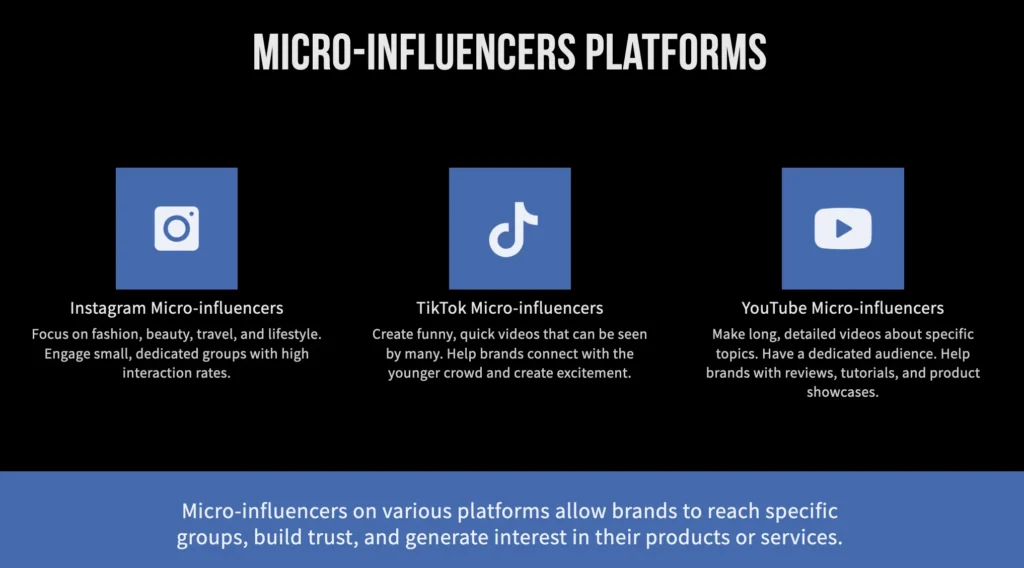
Key Takeaways
- Leading brands like Nike, GoPro, and Zoom are leveraging micro-influencers for impactful marketing campaigns.
- Micro-influencers offer brands the ability to connect with niche audiences and drive authentic engagement.
- This guide provides a comprehensive overview of brand deals with influencers. micro–influencer marketing strategies and best practices.
- Brands can learn how to identify and collaborate with the right micro-influencers for their marketing goals.
- Micro-influencers can gain insights into partnering with brands and maximizing their influence.
What are Micro Influencers?
In the world of influencer marketing, micro influencers play a key role. They connect brands with niche audiences. These influencers are great at making real content. They also at building real relationships with their followers.
Definition of Micro Influencers
Micro influencers are online personalities with a strong following in a specific interest area. They are not as big as mega influencers but connect deeply with their followers. Through their influencer marketing platform, they share things that really matter to their community.
Follower Count Range for Micro Influencers
Micro influencers usually have between 1,000 and 100,000 followers on social media. This size helps them stay authentic and connected with their audience. They are often the perfect choice for brands wanting to work with collaborate with small influencers in their influencer marketing campaigns.
Difference Between Micro and Nano Influencers
On the other hand, nano influencers have an even smaller audience, typically under 10,000. They are very focused and seen as experts in their field. Brands like Glossier and Daniel Wellington have used nano influencers in their targeted work to reach very specific groups.
Micro influencers are great for helping brands engage with special interest groups and build real bonds. Working with the right micro influencers, brands that collaborate with small influencers can reach a very engaged audience. This can grow brand awareness and trust, leading to more sales.
Benefits of Collaborating with Micro Influencers
Working with micro influencers helps brands a lot. It makes their social media shine and connect well with their target groups. These Instagram influencers are amazing at getting people interested, which really helps the brands that work with influencers.
Exceptional Audience Engagement
Micro influencers are great at keeping their fans involved. They build real trust and are very genuine. This makes what they share really popular. It often does better than regular ads. Many brands see big success with micro influencer help.
Unlocking Niche Communities
Micro influencers are leaders in smaller groups with special interests. These places are hard for brands to reach on their own. But, by partnering with influencers that fit their customers. Brands can enter these small markets. This helps the brand become known and grow a loyal group of buyers.
Cost-Effective Influencer Marketing
Using micro influencers is smart for saving money. A big influencer crushes the budget, but many micro influencers don’t. They bring in similar results, often even better, for less money. Top brands like this approach. It makes their budget go further without losing results.
Fashion brands and beauty brands are finding new ways to reach people. Using micro influencers’ power is key. It helps find brands interested in long-term collaboration. It’s proving to be very successful and is growing in popularity.
Micro Influencers in Action
The power of micro influencers in boosting brand awareness is huge. They reach out to smaller, loyal groups with a true voice, changing the marketing game. When brands work together with them, they connect deeply with their audience. This builds trust and hits the mark with their message.
Real Examples of Successful Micro Influencer Campaigns
Chipotle, the fast-casual Mexican eatery, is using micro influencers well on TikTok. Videos like #ChipotleLidFlip and #GuacDance got 240 million and 430 million views. People loved it and it showed how the brand could speak to a younger crowd in a fun way.
National Geographic took their stunning photos global with help from instagram micro-influencers. They used their 280 million Instagram fans. They shared amazing images from across the globe. This lets micro influencers show their unique view to everyone.
This shows the big impact micro influencer campaigns can have. They boost brand awareness and bring a genuine connection to the table. Working with these influencers helps brands reach and connect with their community. It opens new doors.
Finding the Right Micro Influencers
In the social media marketing world, brands are eyeing influencers, especially micro-influencers. These folks have loyal followers and connect well with them. Picking the right ones is key for ads that sell stuff well.
Leveraging Hashtags and Social Media Search
Using hashtags and search tools is a top way to find micro-influencers. Brands looking to work with niche influencers search for top hashtags. This method helps find influencers like bloggers and experts who are part of that online community.
Identifying Existing Brand Advocates
Beauty brands partner with micro-influencers. They often see their best fans in their customer list. These fans love the brand, share about it, and truly like the products. By supporting these fans, companies build strong ties and tap into their power to attract new followers.
Creating a Brand Ambassador Program
Brands can make a brand ambassador program to pull in influencers for teamwork. This gives micro-influencers a special brand role. They get cool benefits. They also get chances to work together. This turns them into real advocates for the brand.
Using Influencer Marketing Platforms
Using influencer platforms makes it easier to find, connect, and work with micro-influencers. These tools link brands with influencers from different areas. They have crowds of various sizes. They focus less on million-follower influencers. They focus more on those who deeply connect with the brand. They work with small influencers to promote the brand.
Top 10 Brands Collaborating with Micro Influencers
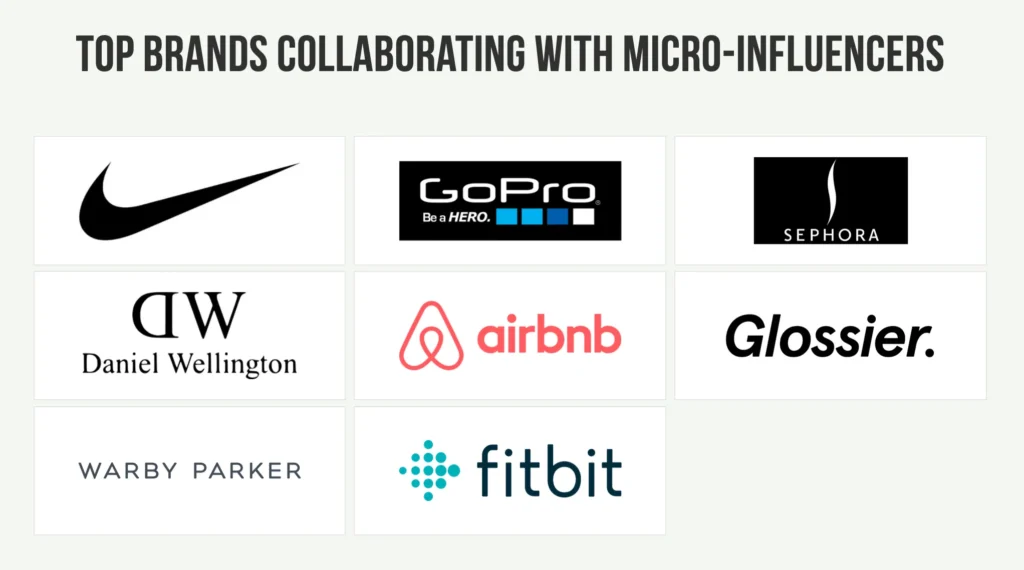
In today’s world, brands find working with collaborating with micro-influencers key. These influencers have strong, focused followings in their fields. They help brands looking for ways to collaborate with micro-influencers. Top brands in fashion and beauty, lifestyle, and tech have really benefited in 2023.
- Nike has seen how powerful it is to work with influencers and brands. Their canon brand ambassador scheme pairs them with micro-influencers. These partners live out Nike’s values and encourage others to live actively.
- GoPro, the action camera company, is great at working with collaborating with micro-influencers. These influencers share exciting content. They highlight GoPro’s features, encouraging their fans to go on adventures and capture them.
- Sephora, a top name in fashion and beauty, knows working with micro-influencers is important. Their work with these influencers makes their products known in specific groups. It builds trust and boosts sales.
- Daniel Wellington, known for its watches, has a big social media presence from collaborating with micro-influencers. They work with influencers who fit their simple style. This has attracted younger, style-focused viewers.
- Airbnb values looking for brands that work with micro-influencers. These influencers give real insights, encouraging travel and booking through Airbnb.
- Glossier, a loved fashion and beauty brand, uses micro-influencers well. They team up with influencers who feel close to their audience. This builds a community and trust around the brand.
- Warby Parker uses micro-influencers to promote its trendy, affordable glasses. These influencers showcase their unique style with Warby Parker glasses. It helps the brand connect with its audience.
- FitBit is a success story in health and fitness partnerships with micro-influencers. These influencers talk about healthy living. They motivate their audience and highlight FitBit activity trackers.
- La Croix has departed from the traditional marketing strategies used by beverage giants. It is a renowned brand. It has embraced the power of micro-influencers to drive its success. The company formed a key partnership with the Whole30 nutrition program. It used the power of micro-influencers to show its products. This new approach allowed La Croix to truly connect with its audience. It fostered trust and credibility. Traditional ads often struggle to do this.
Coca-Cola: Influencer marketing has become a must for industry titans like Coca-Cola. They have adeptly harnessed its potential. Their #Cokeambassador campaign has smoothly added micro-influencers to their marketing. These influencers regularly share candid moments featuring Coca-Cola’s drinks. Coca-Cola has used micro-influencers’ real connections and relatable personas. This has built strong brand affinity and relatability. These traits resonate with their audience.
“Micro-influencers have become essential partners for brands seeking authentic connections with their target audience. Their relatable and engaging content resonates with their followers, fostering trust and driving meaningful engagement.” – Marketing Analyst, Forbes Magazine
Micro-influencer influence is growing. These brands show how smart collaborations can lead to success. They’ve opened new doors for others to follow.
Effective Strategies for Micro Influencer Collaborations
Working with micro-influencers means careful planning and follow-through. Brands can get the most out of their investment and create strong links with their customers.
Setting Clear Campaign Goals
The webinar will be led by the head of our sales team. He will cover the key strategies for closing deals. These goals might be to make people more aware of your brand, drive them to your website, or increase sales. Clear goals help brands judge how successful their work with micro-influencers is. This makes planning for more campaigns in the future easier.

Providing Creative Freedom
Micro-influencers are great at creating content that feels real. Letting them have freedom when creating can really help. It makes sure the content they make is true to who they are and what their followers like. Letting influencers balance following some brand points with their own style makes for better, more real content.
Fostering Long-Term Relationships
It’s wise to think of working with micro-influencers as building ongoing relationships, not one-time deals. Cultivating these relationships can bring benefits like loyalty, trust, and more people supporting your brand. Things like staying in touch, giving them early looks at new products or events, and rewarding based on how well things go can all help build strong, lasting partnerships.
Finding success with micro-influencers takes a focused strategy. It values what the brand wants while letting the influencer’s creative voice shine. Choosing small influencers who believe in your brand’s values and keeping things real can make this type of marketing very effective.
Measuring Success with Micro Influencers
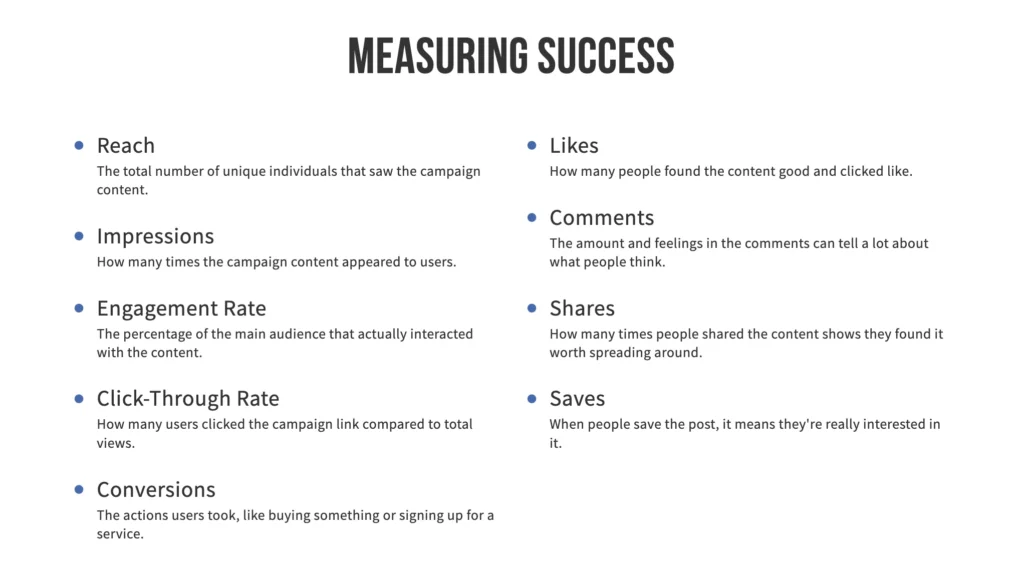
More and more, brands that work with small influencers are seeing significant impact. brands are increasingly turning to micro-influencers for help with their ads. Figuring out if these tie-ups are working is key. Influencers on Instagram and similar sites can make a big difference in how many people know, engage, and buy from a brand. But, it’s important to keep track of some numbers and really look at how people are interacting with the ads.
Key Performance Indicators (KPIs) to Track
Looking at a micro-influencer campaign’s success means watching certain signs. Brands partnering with a micro-influencer need to check on things like:
- Reach: The total number of unique individuals that saw the campaign content.
- Impressions: How many times the campaign content appeared to users.
- Engagement Rate: The percentage of the main audience that actually interacted with the content.
- Click-Through Rate: How many users clicked the campaign link compared to total views.
- Conversions: The actions users took, like buying something or signing up for a service.
Analyzing Engagement Metrics
Just watching KPIs isn’t enough. To really get the picture, collaborating with brands need to look closely at how people are engaging with the ads. Beauty influencers and other small influencers often get a lot of people interacting with their posts. By watching things like:
- Likes: How many people found the content good and clicked like.
- Comments: The amount and feelings in the comments can tell a lot about what people think.
- Shares: How many times people shared the content shows they found it worth spreading around.
- Saves: When people save the post, it means they’re really interested in it.
Nano influencers with smaller groups of followers can still pull in a lot of interaction. This makes them good for unique ads. By looking closely at these measures, brands can see how well their ads are really doing and make smart choices for future work with micro-influencers.
Influencer Marketing Trends Involving Micro Influencers
Influencer marketing is always changing. Brands now work with applications from influencers to market their goods. Micro-influencers play a big role by reaching smaller but dedicated groups, making influencer marketing more authentic for brands.
Importance of Authenticity and Transparency
People are noticing when content is sponsored. So, brands usually work with influencers who are authentic and transparent. Micro-influencers fit this bill perfectly. They are seen as genuine and build trust with their fans. This makes the brand’s connection with the audience stronger, which is vital in marketing.
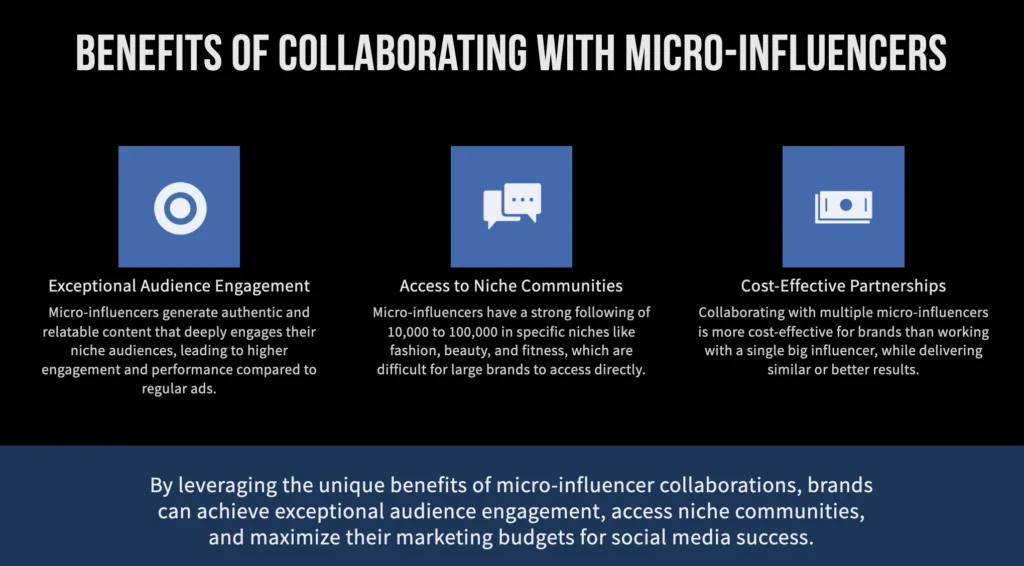
Rise of Niche Influencers
A new trend is the rise of niche influencers. They focus on specific communities and interests. Influencers to create targeted content are becoming extremely popular. This matches the need for marketing that feels personalized. Brands now see the benefit of working with these influencers to get their messages across more effectively.
Brands can benefit by joining these movements. Working with micro and niche influencers can lead to real, trustful relationships. This, in turn, can increase their connection and sales. It’s all about finding the right influencers who can reach the people that matter most.
Micro Influencers on Different Social Media Platforms
Micro-influencers have become important on many social media sites. Each has its own way of sharing content and connecting with people. Brands can use influencer marketing platforms to find the right people to work with.
Instagram Micro Influencers
Instagram is a top spot for micro-influencers. They focus on fashion, beauty, travel, and lifestyle. Brands like working with them because they engage small, dedicated groups well and have high interaction rates.
TikTok Micro Influencers
TikTok is great for micro-influencers, known for their funny and quick videos. These videos can be seen by many. Working with TikTok micro-influencers can help brands connect with the younger crowd or create excitement around their products.
YouTube Micro Influencers
YouTube micro-influencers have found success by making long videos about certain topics. They have a dedicated audience. This type of influencer can help brands by giving detailed reviews, tutorials, or showing their products in use.
No matter the site, micro-influencers let brands get close to specific groups of people with genuine content. With the right micro-influencers, brands can reach more people, gain trust, and get their audience interested.
Best Practices for Micro Influencer Marketing
Brands are now seeing the value of working with micro-influencers who match their audience. This method has grown as a strong brand marketing strategy. It is important to use best practices. These build realness, trust, and help both sides grow.
Setting Clear Guidelines and Expectations
At the start of working with a micro-influencer, brands and influencers must lay out clear rules. This means setting out what goals you have, what content is needed, deadlines, and what you’ll get in the end, especially in securing brand deals. With these set from the start, everyone works towards the same goal. This makes the teamwork smooth and brings the best results.
Respecting Influencer Creative Freedom
Micro-influencers are great at making real and engaging content for their followers. Because of this, brands should let influencers keep their creative freedom. Letting them show their unique style and voice is key. It makes the campaign more real and uses the influencer’s skill to reach their fans.
Building Authentic Relationships
Good micro-influencer campaigns are based on true connections between brands and influencers. By talking openly, respecting each other, and understanding each other’s aims, larger connections can be made. These go beyond simple deals. This helps keep the brand’s message clear. It also makes the influencers true fans of the brand, bringing loyalty and support.
By sticking to these best practices, brands can do a lot with micro-influencer marketing. They can use these powerful voices to talk to their audience, make their brand known, and see strong results.
Conclusion
In today’s world, the social media landscape changes fast. Micro-influencer marketing is now a key tool for brands looking to boost brand awareness, engagement, and sales. This article shows that working with micro-influencers brings many benefits. These include strong audience engagement, reaching niche groups, and saving money.
Big names like Nike and GoPro, as well as cool brands like Chipotle and Zoom, have used micro-influencers wisely. By creating strategic and authentic partnerships with these influencers, brands can reach focused and engaged people, an example being a brand that works with micro influencers. This helps build trust and credibility with their audiences.
Micro-influencers really know how to reach their followers on a personal level. They offer a feeling of true authenticity that people love. This kind of connection is key for brands looking to succeed long-term in their marketing. So, working with micro-influencers is an important part of a solid marketing plan.
FAQ
What is a micro-influencer?
A micro-influencer has more followers than most people but is not quite a celebrity. They have 1,000 to 100,000 followers. These influencers promote products that match their interests or knowledge.
What are the benefits of collaborating with micro-influencers?
There are many benefits. These include connecting well with their followers, reaching specific groups, and saving money on marketing. This is cheaper than working with big-name influencers or celebrities.
Can you provide examples of successful micro-influencer campaigns?
Sure. Chipotle’s challenges on TikTok got millions of views. National Geographic shares stunning user photos on Instagram. These are all thanks to micro-influencers.
How can brands find the right micro-influencers to collaborate with?
Brands can find micro-influencers by searching social media for specific hashtags. They can also look for people who are already sharing about the brand. Utilizing tools like SocialBook’s Product Launcher to look for influencers helps too.
What are some effective strategies for micro-influencer collaborations?
First, set clear goals for the campaign. Let influencers be creative. Also, aim to build lasting relationships with them. This helps both parties grow together.
How can brands measure the success of micro-influencer campaigns?
Measure the campaign’s success by tracking reach, clicks, and conversions. Also, look at engagement metrics like comments and shares. These show how people interacted with the content.
What are some influencer marketing trends involving micro-influencers?
Being real and honest is a big trend now. Also, more focus is on niche influencers. These elements are shaping influencer marketing with micro-influencers.
How do micro-influencers differ across social media platforms?
Micro-influencers use sites like Instagram, TikTok, and YouTube. Each platform has its own audience and style. Brands need to adjust their approach for each one.
What are the best practices for micro-influencer marketing?
It’s important to be clear about what you want but let the influencers be themselves. Good communication and respect build strong, trustworthy relationships.
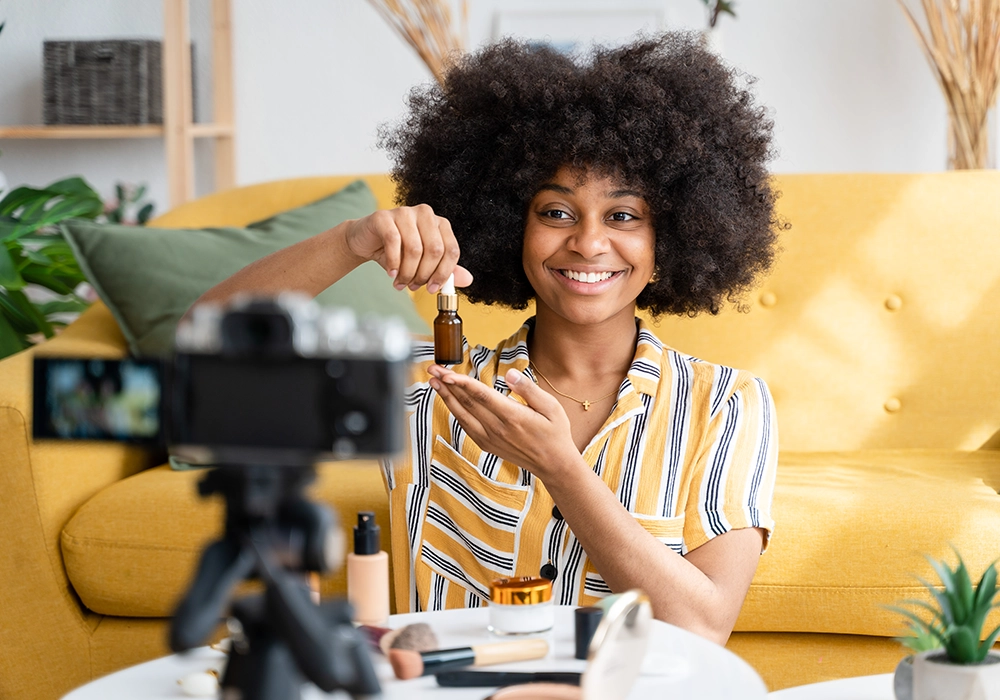

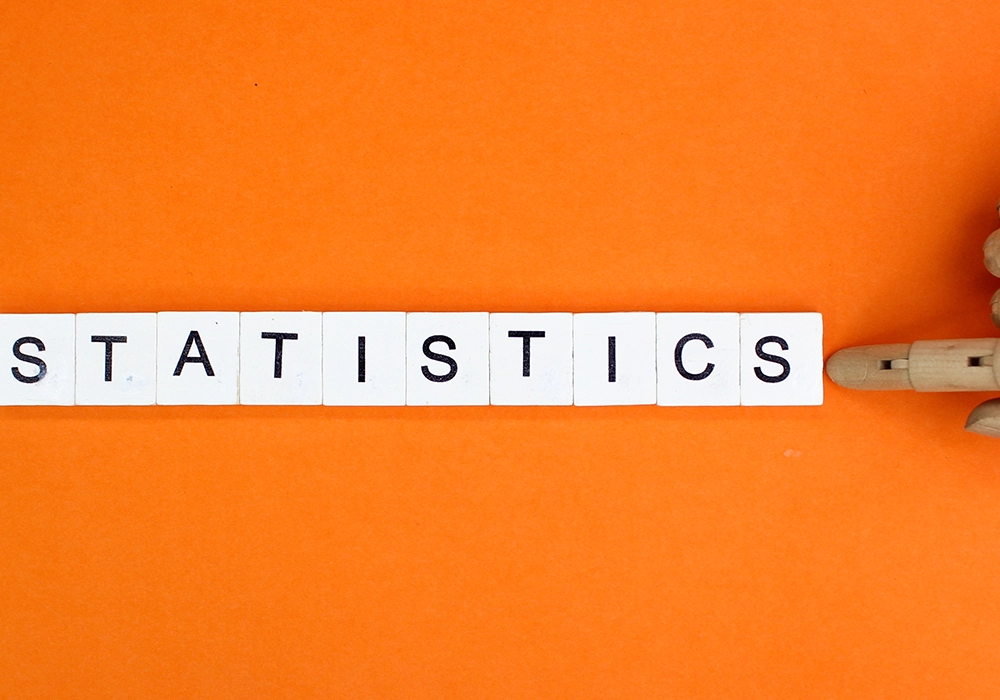

Leave a Reply